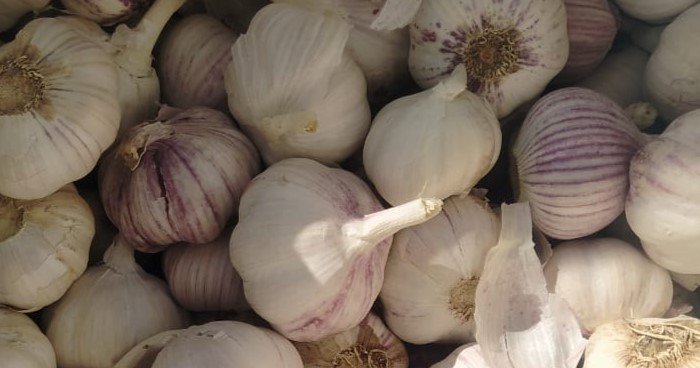Introduction
Himalayan Red Garlic, or Pahadi Lahsun, or Pahadi garlic, stands apart in the botanical world, not only for its aromatic intensity but also for its exceptional phytochemical profile. This variant’s distinctiveness is largely due to the extreme climatic stresses it endures in the high altitudes of the Himalayas, along with the clean air and water, which markedly enhance its nutritional and medicinal value.
Adaptive Phytochemical Synthesis
The cultivation of Himalayan Red Garlic in the challenging, cold climates of the Himalayas subjects the plants to significant environmental stress. This stress triggers a survival mechanism within the garlic, leading it to produce higher concentrations of vital phytochemicals. Techniques like non-irrigational farming further stress the plants, causing them to concentrate all their nutrients into fewer, smaller bulbs. This results in garlic that is not only smaller and more aromatic but also substantially richer in health-promoting compounds such as antioxidants.
Enhanced Phytochemical and Antioxidant Profile
Himalayan Red Garlic is densely packed with allicin, ajoene, flavonoids, and essential oils. These compounds are potent antioxidants and have strong antibacterial properties:
- Allicin is known for its effectiveness in inhibiting bacterial DNA synthesis.
- Ajoene supports the antimicrobial actions of allicin, albeit more slowly.
- Flavonoids help in reducing inflammation and enhancing immune function.
- Essential oils contribute to the garlic’s overall antimicrobial and antioxidant capabilities.
These phytochemicals not only provide robust health benefits but are also indicative of the garlic’s superior quality. The intense stress conditions under which they are produced lead to a garlic variant that is exceptionally potent in combating oxidative stress and supporting cardiovascular health.
Cost Implications
The rigorous and harsh growing conditions of the Himalayas mean that Himalayan Red Garlic yields are significantly lower compared to those of commercially grown garlic. While a typical garlic farm might produce thousands of kilograms per hectare, the yield for Himalayan Red Garlic can be as low as a few hundred kilograms per hectare. This scarcity, combined with the high cost of sustainable, stress-inducing cultivation practices, contributes to the high price of Himalayan Red Garlic. Consumers pay a premium not just for the garlic itself but for its enhanced nutritional benefits and the sustainable agriculture practices it supports. Have a look at the statewise garlic production especially the yield per hectre in this link : Garlic_Statewise
Conclusion
Himalayan Red Garlic or pahadi garlic is a nutraceutical powerhouse, with a price tag that reflects its unparalleled quality and the unique conditions of its cultivation. The high stress of the Himalayan environment, which induces the garlic to produce its potent phytochemicals, makes this garlic a valuable addition to the diet of health-conscious consumers. It’s an investment in health, supporting not only personal well-being but also environmentally conscious farming practices.
Our Harvest
Around the month of June we harvest our certified organic Pahadi Garlic from our farms in Nawar, Himachal Pradesh. It is one of our most sought after products with demand from all over India. You can find it here on the website, until stock lasts.
Further Exploration
For those interested in detailed scientific studies on Himalayan Red Garlic, examining its phytochemical properties and health benefits further can provide deeper insights into why this garlic variant is considered superior to its more commonly available counterparts.

